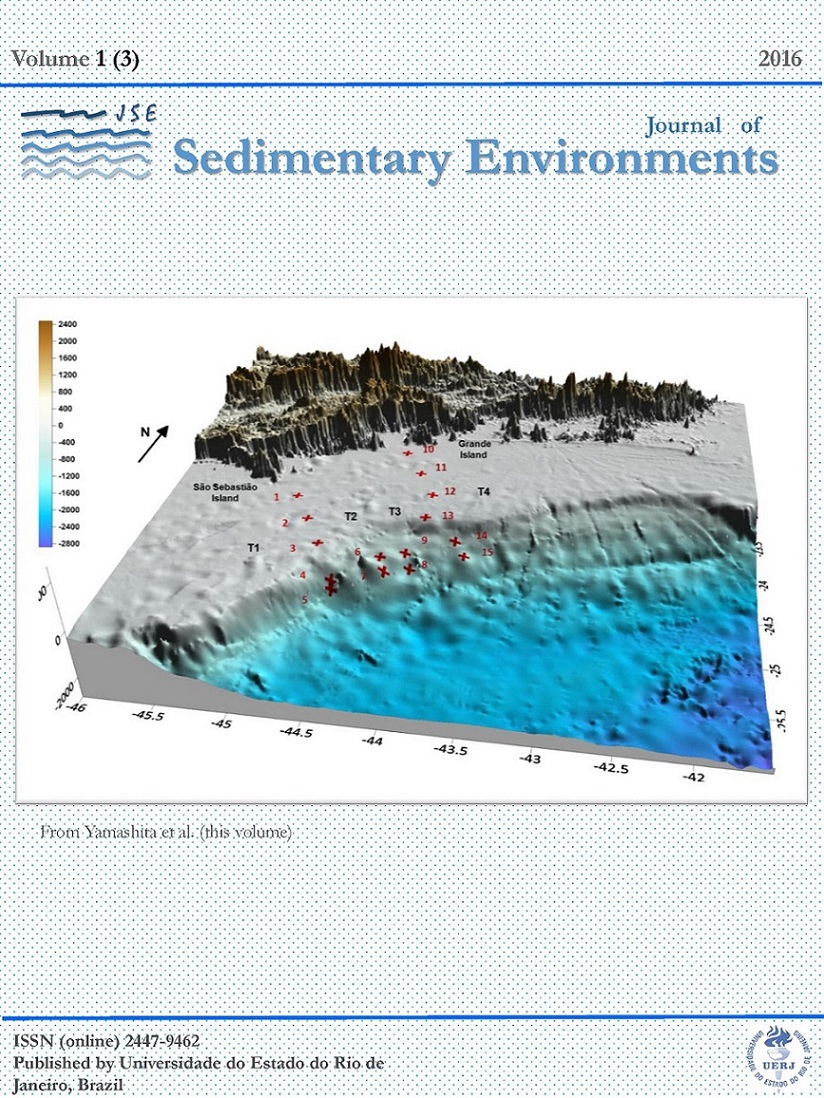METAL SORPTION BY SEDIMENTS FROM A MANGROVE REFORESTATION AREA IN GUANABARA BAY (SE BRAZIL) REVEALED BY USING RADIOTRACERS
DOI:
https://doi.org/10.12957/jse.2016.23707Parole chiave:
Radiotracer, Microcosms, Mangrove, Reforestation, Sorption kineticsAbstract
This work applied the radiotracer technique to evaluate the chromium (Cr) sorption by sediments of a mangrove degraded area under reforestation phase. The radiotracer 51Cr(III) was used to assess the removal kinetics of this metal from tidal water by underlying sediments in two different environments from the mangrove area of the reserve Parque Natural Municipal Barão de Mauá (Rio de Janeiro, SE Brazil).The results indicated a faster Cr(III) removal by sediments from the area with initial mangrove reforestation (t1/2 = 12.1 ± 0.1 h) than estimated for the area with older mangrove reforestation (t1/2 = 18.0 ± 0.2 h). However, this difference was explained by a stronger sediment bioturbation in the area that presented faster Cr removal (the initial mangrove reforestation zone). These results evidence the importance of the influence of biological activity, in the capacity of the mangrove sediment to remove Cr (III) from tidal waters.
##submission.downloads##
Pubblicato
Fascicolo
Sezione
Licenza

Journal of Sedimentary Environments (JSE) is licensed under a Creative Commons Attribution-Noncommercial-Share Alike 4.0 International License.

